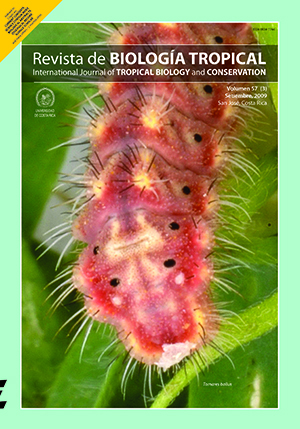Abstract
Tropical dry forest (TDF) succession was monitored in Santa Rosa, Costa Rica. We analyzed the effect of soil type on forest structure and diversity. Eight seasonally-dry TDF sites located along a successional chrono-sequence (10, 15, 20, 40, 60 and >100 years) were examined in relation to 17 soil pedons and six soil orders. Soils had moderate to high fertility and were classified as Entisols and Vertisols, although Mollisols, Alfisols, Inceptisols and Ultisols were also present. One-hundred and thirty 500 m2 plots were established, 20 plots in secondary and 10 plots in mature TDFsites. Diameter at breast height (dbh) and total tree height were measured for saplings (dbh ≥1 and <5 cm), shrubs and trees (dbh ≥5 cm). With the excep-tion of two sites (40 and 60 years), soil type did not have significant effects on forest structure. However, tree diversity measured with Shannon-Wiener’s H’ and Fisher’s α rarefaction curves, showed substantial differences among soil types, which became accentuated in mature forests. This pattern might be explained by non-random distributions of TDF trees, the scale of the study, the plot shape, and the use of systematic sampling designs. Low-fertility sites in general had higher species richness, consistent with idea that more restrictive soils reduce competition among trees and allow co-existence of species with contrasting growth rates. Changes in soil properties along a chrono-sequence of Entisols indicated that trees may experience more severe water stress as succession progresses, which may require adjustments in biomass allocation and phenological behavior of the dominant species. Our results suggest that edaphic specialization is more pronounced in mature TDF forests, and that most TDF trees are generalists in relation to soil type, highly tolerant to site heterogeneity, and show little physiological specializations in response to edaphic heterogeneity.
Comments

This work is licensed under a Creative Commons Attribution 4.0 International License.
Copyright (c) 2009 Revista de Biología Tropical






